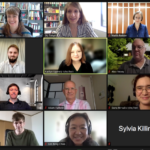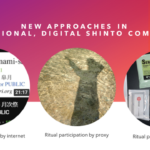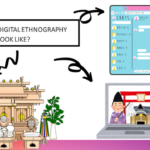
Download
Venue
Online (Zoom meeting)
Registration Info
This is a past event. Registration is no longer possible.
Please subscribe to our DIJ Newsletter to stay informed about our research activities, events, and publications:
Worshipping the Kami at a Distance: World-Wide Shinto and the Global Pandemic
June 17, 2021
Slides © Kaitlyn Ugoretz
While emic definitions of Shinto often describe the ritual tradition as the unique “indigenous faith of the Japanese people” and the sacred landscape of the Japanese archipelago, such claims are troubled by the growth of a “global Shinto.” The confluence of a number of Japanese actors’ strategies for repositioning the nation as being of global import over the last few decades—including the export of Japanese martial arts, the international circulation of Japanese popular culture products such as anime as a medium for soft power, spiritual tourism campaigns, and the “greening” of Japanese religions—have rendered Shinto not just legible, but also attractive and available to non-Japanese people around the world. Based on several years of multi-sited digital ethnographic research, this presentation examined the development of transnational, digital Shinto communities (DSCs) on social media over the last twenty years. It first introduced the activities of three Shinto priests and their shrines located in the mainland United States, giving particular attention to their innovative use of digital technologies and adaptation of ritual practices before and during the COVID-19 pandemic. Then it explored transnational Shinto practitioners’ ritual and discursive practices to trace the ongoing glocalization of Shinto traditions and epistemologies. The paper concluded with a reflection on the importance of digital ethnography as method in response to obstacles to traditional research during a global pandemic. It also addressed problems and merits of digital ethnography as well as the incorporation of affective dimensions in digital ethnography, digitalisation strategies of shrines due to the pandemic and the need for social distancing and respective negotiation processes. Examples of the digitalisation of Shinto included virtual/online donations. The talk was followed by a discussion with the 20 participants and focused on future developments, e.g. in the context of AI.
A video recording can be made available for those who are interested in Kaitlyn’s talk but missed it due to the time difference. Please contact the organizer of the lecture series, Nora Kottmann.
Kaitlyn Ugoretz is a is a digital anthropologist of Japanese religions and PhD candidate in the Department of East Asian Languages and Cultural Studies at the University of California, Santa Barbara. Her dissertation “World-Wide Shinto” examines the globalization of Shintō through digital media and the development of transnational, digital Shinto communities. Her work has been published in the Bloomsbury Handbook of Japanese Religions (2021) and the New Nanzan Guide to Japanese Religions (forthcoming), and she serves as a Japanese Religions Editor for the University of British Columbia’s Database of Religious History. As a 2021 Sacred Writes Public Engagement Fellow, Kaitlyn creates educational content on East Asian religions for the educational YouTube channels Religion For Breakfast (writer) and Eat Pray Anime (host).



